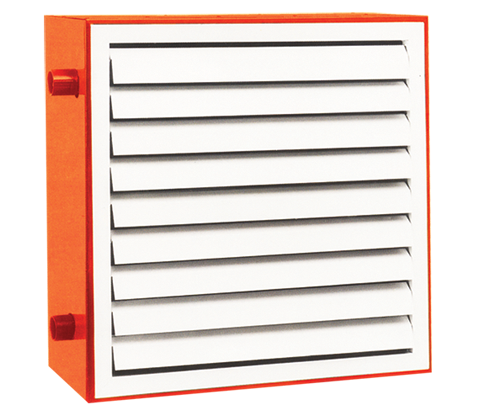Unit heater
What is a unit heater?
Applications of unit heaters
- Large warehouses
- Distribution centers
- Large garages
- exhibitions
- Meeting halls
- ceremonial hall
- greenhouses
- gyms
How is the structure of a unit heater?
Unit heater components
- Coil
- Main compartment
- Vanes or air outlet dampers
Original storage of unit heater
Fans and coil are placed inside the body. On the other hand, dampers are installed on it. Depending on the environment where the heater is used, the material of the body varies. Galvanized steel can be used to make the body. Apart from that, there are other types of fiberglass that are suitable for the body. The thickness of the body should be according to the customer's needs. A single layer of paint is usually placed on the body, which is kiln-fired.
The unit heater fans
Air-directing dampers
The main task of these blades is to evenly distribute the air in the environment. These dampers are installed in the outlet opening of the unit heater body. You can manually move these vanes according to your needs so that the air flow moves in the direction you want.
What are the types of unit heaters?
Fuel unit heaters
If you use unit heaters in environments such as garages or large workshops, this category is more suitable for you. In order to maintain health and safety, you must have a proper ventilation system. This system makes the carbon dioxide, which is caused by the burning of fuel, leave the environment well and does not cause people to be gassed. The larger the area where these units are used, the better they will perform.
Radiant types of heaters
What are the advantages of using unit heaters?
- The heat generated by the unit heater is pleasant and not annoying.
- Its operation speed is high in large places and it can easily heat very large places.
- In order to create a uniform and suitable air flow everywhere in the building, several unit heaters can be used simultaneously in the environment.
- Due to their good performance, they have affordable prices and with their high efficiency in the long term they can compensate the purchase costs.
- Because they can be used both on the ceiling and on the wall, so they take up little space.
- Their use has the lowest possible risk because it does not have such complex components.
- To replace damaged parts, you don't need to spend high costs to buy a newer type, and engine replacement is easily possible.
- The possibility of adjusting the fan speed to speed up the heating process
What are the disadvantages that have been considered for the unit heater?
- If you use unit heaters in large warehouses. Because crew and staff rarely visit these areas, the heating is accompanied by the loud noise of the unit's fans, which can be a bit annoying.
- For their safe and correct installation, it is necessary that your facilities have the ability to support it so that there are no problems during use.
- For proper operation of fans, they need to be placed in an environment with correct vertical alignment.
- It is not suitable to use a heater unit for low heights and it must be installed at a certain height because the air temperature is high.
price of Unit heaters
Based on the capacity of unit heaters, they will have different prices. The stronger the motor in the fan, the higher the work efficiency and the heating speed. In addition, the price of the product will also increase. Depending on the type of fuel intended for the heater, there are different price ranges. In order to be able to estimate the price of the heater well, you must consider each and every component of it, such as the location of the heater, the type of installation, etc., and know that the more complex its structure, the more its price will increase.

